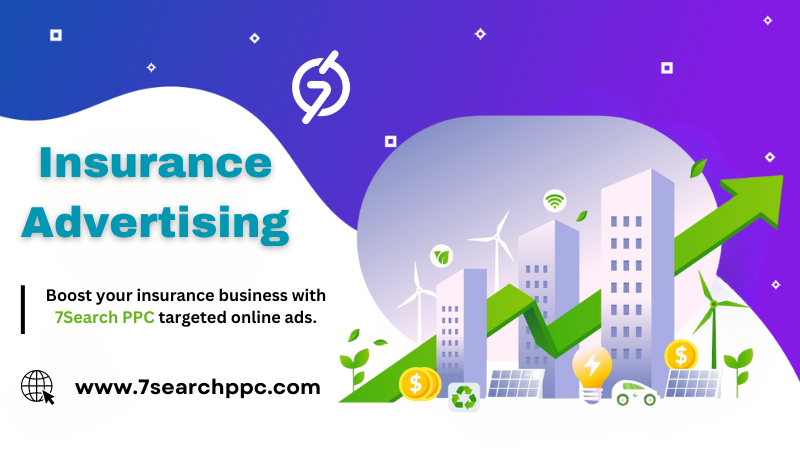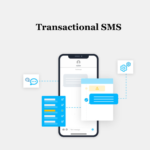Insurance is one of the most essential industries globally, protecting against unforeseen risks and financial uncertainties. However, with increasing competition, insurance companies need to find ways to attract and retain customers continuously. This is where insurance advertising comes into play. In this article, we’ll explore leveraging insurance advertising for maximum impact, diving deep into effective strategies, ad formats, and tips for optimizing your insurance business advertising.
Understanding the Importance of Insurance Advertising
Insurance advertising is a critical component of any insurance company’s marketing strategy. It’s more than just promoting products or services; it’s about educating the audience on the importance of insurance and building trust with potential clients.
The role of insurance advertising has evolved over the years, from traditional TV and print ads to digital channels like social media, Google ads, and influencer marketing. In this digital age, insurance companies have countless opportunities to connect with their audience in creative ways.
Why Insurance Advertising Matters
- Builds Trust: Trust is essential in the insurance industry. People are more likely to invest in insurance products from companies they trust. Effective advertising helps establish that trust by conveying the brand’s values and credibility.
- Educates the Market: Many people are unaware of the different types of insurance plans available or the nuances involved in insurance policies. Insurance advertising helps bridge that gap by informing potential clients about the importance of insurance and how it can protect them financially.
- Increases Visibility: Advertising ensures that your insurance company remains top-of-mind for consumers when they are looking for insurance products. It helps increase brand visibility in a competitive market.
Types of Insurance Advertising
Insurance advertising isn’t one-size-fits-all. There are several formats and platforms you can use to reach your audience. Here are the most popular types:
Digital Advertising
In today’s digital age, the majority of potential insurance buyers are online. From Google search ads to social media platforms, digital advertising is the go-to strategy for many insurance companies. The most common forms include:
- Search Engine Ads: Platforms like Google Ads allow companies to place their ads at the top of search results, making it easy for potential customers to find them.
- Social Media Ads: Facebook, Instagram, LinkedIn, and Twitter provide targeted advertising options that allow insurance companies to reach a specific audience based on demographics, interests, and behaviors.
- Display Ads: These are banner ads that appear on various websites. They’re often used for retargeting, showing ads to users who have already visited your website.
Television and Radio Ads
While digital advertising has grown exponentially, TV and radio still offer a massive reach, especially for older demographics. These ads can be highly effective in conveying emotions, as they combine visuals and audio to create an impactful message.
Print Advertising
Print media like newspapers and magazines might not be as popular as they once were, but they still offer value in certain demographics. Many local businesses and insurance agents still rely on print ads to connect with their community.
Out-of-Home (OOH) Advertising
OOH ads, including billboards, transit ads, and digital screens in public areas, help insurance companies stay visible to people on the move. These ads are best suited for brand awareness and reinforcing brand presence.
Effective Strategies for Insurance Advertising
To truly maximize the impact of your insurance advertising, you need to adopt a strategic approach. Below are key strategies that can elevate your advertising efforts:
Know Your Target Audience
Understanding your target audience is the first step in creating impactful insurance advertising. Each type of insurance (health, auto, life, business, etc.) appeals to different demographics, and your ad campaigns should reflect that.
- Life Insurance: Generally appeals to older adults or families with children. Messaging should focus on long-term financial security and peace of mind.
- Auto Insurance: Often targets younger adults who are first-time car owners or those who may be looking for better rates. Ads should emphasize savings and convenience.
- Health Insurance: Appeals to both individuals and businesses. Highlight benefits like coverage, flexibility, and cost savings in your campaigns.
Highlight Unique Selling Points (USPs)
In a competitive marketplace, it’s crucial to differentiate yourself. What makes your insurance business different? Maybe it’s better rates, superior customer service, or a wider range of coverage options. Whatever your USP is, ensure it’s a central theme in your insurance services ads.
Use Emotional Appeal
Insurance ads that tap into emotions—such as safety, security, or peace of mind—often resonate more deeply with audiences. Whether it’s a heartfelt story in a life insurance ad or a reassuring message in a health insurance campaign, emotional appeals help in building a connection with potential clients.
Leverage Data-Driven Advertising
The digital age offers access to a vast amount of data, enabling companies to target their audience more precisely. Use analytics tools to understand the behavior of your customers and create personalized ads that resonate with them.
- Retargeting Ads: Show ads to users who have already interacted with your site or insurance service. Retargeting is highly effective in reminding customers about the services they showed interest in.
- A/B Testing: Test different versions of your ads to see which resonates best with your target audience. This can significantly improve the performance of your insurance business advertising.
Invest in Mobile Advertising
With more people browsing on mobile devices, it’s essential to ensure that your insurance ads are optimized for mobile platforms. Mobile ads, especially those in-app, offer a targeted way to reach potential customers. Create short, attention-grabbing ads that encourage users to click and learn more.
Crafting Successful Insurance Services Ads
Insurance services ads must strike a balance between being informative and engaging. Below are tips on crafting successful ads:
Keep Messaging Clear and Concise
Insurance can be a complex subject, but your ads should not be. Use simple language to explain the value of your services. Avoid jargon and make it easy for potential clients to understand what you’re offering and why they need it.
Use Strong Call-to-Actions (CTAs)
A clear, compelling CTA encourages potential customers to take the next step, whether it’s signing up for a newsletter, getting a free quote, or calling for more information. Strong CTAs like “Get Covered Today” or “Find Your Rate Now” work well in insurance planning ads.
Visual Storytelling
Insurance advertising doesn’t have to be dry. Use visuals to tell a story, whether it’s through images, animations, or videos. This not only helps in breaking down complex insurance concepts but also keeps the audience engaged.
Optimize for Conversions
Your ads should direct potential clients to a landing page optimized for conversions. This means having a clear layout, easy-to-read content, and simple forms for leads to fill out. Ensure the process is quick and seamless, especially for mobile users.
Insurance Planning Ads: A Niche Focus
Insurance planning ads often require a more specialized approach because they deal with long-term planning rather than immediate needs. These online ads should focus on educating consumers about the importance of future-proofing their finances.
Target Life Events
Key life events such as getting married, buying a house, or having a child often prompt people to think about insurance. Create ads that target these specific moments, offering tailored solutions like family insurance plans or home insurance policies.
Build Trust Through Thought Leadership
Many consumers feel overwhelmed when it comes to planning for their insurance needs. Position your company as a thought leader by creating educational content that addresses common questions. This content can be promoted through your ads, driving traffic to your site where potential clients can learn more.
Highlight Long-Term Benefits
For insurance planning ads, focus on the long-term benefits of securing financial protection today. Messaging should be geared toward how your plans offer peace of mind and stability for the future.
Optimizing Insurance Business Advertising for Maximum Impact
To ensure your insurance business advertising achieves its full potential, consider these optimization techniques:
Use Local SEO
Local SEO is crucial for insurance companies, especially those with physical locations or agents who serve specific geographic areas. Optimize your Google My Business profile, ensure your website is mobile-friendly, and include location-based keywords in your content.
Collaborate with Influencers and Affiliates
Partnering with influencers or affiliate marketers who can vouch for your insurance services is another way to expand your reach. For example, personal finance bloggers or YouTube content creators can create sponsored content that promotes your insurance products in a more organic way.
Focus on Video Marketing
Video ads are particularly effective for the insurance industry because they allow you to explain complicated concepts in an engaging manner. Create informative videos on topics like “How to Choose the Right Insurance Plan” or “The Benefits of Health Insurance” and promote them through YouTube ads, Facebook, or Instagram.
Run Seasonal Campaigns
Certain times of the year naturally prompt consumers to think about their insurance needs, such as open enrollment periods for health insurance. Running seasonal ad campaigns can boost your visibility and attract new customers when they are actively looking for coverage.
Track and Measure Success
Finally, always track the performance of your campaigns. Use analytics tools to measure click-through rates, conversions, and other KPIs to see what’s working and what’s not. This data can then be used to refine future ad campaigns.
Conclusion
Insurance advertising is a powerful tool that, when leveraged correctly, can drive significant growth for your business. By understanding your audience, focusing on your USPs, and utilizing modern advertising techniques, you can ensure that your insurance ads not only reach the right people but also compel them to take action. Whether you’re promoting life insurance, health insurance, or business
References
Why Is Your Average CPC So High and how to fix it?
What Is The Best CPC Ad Network?
The Anatomy Of An Irresistible Display Ads
Retargeting Ads: Reach your Target Audience With PPC Ad campaign




